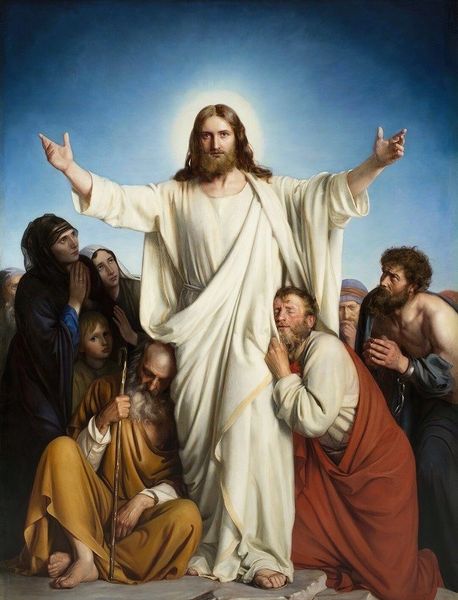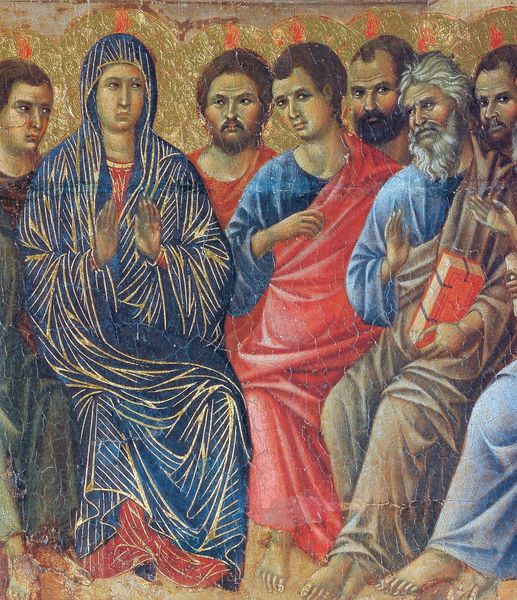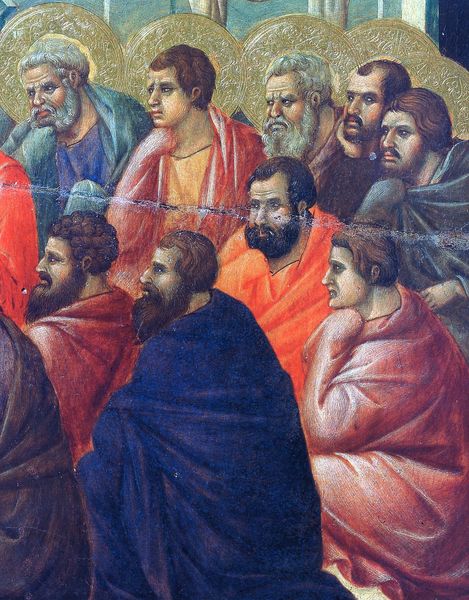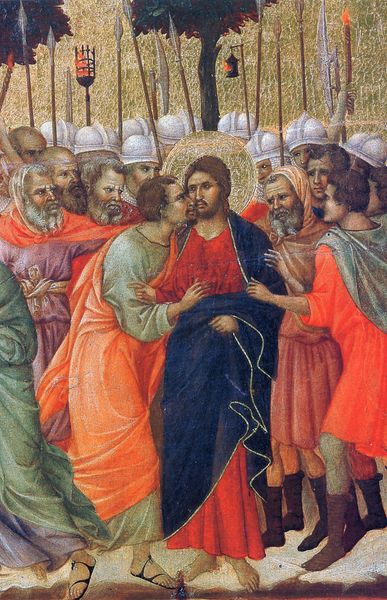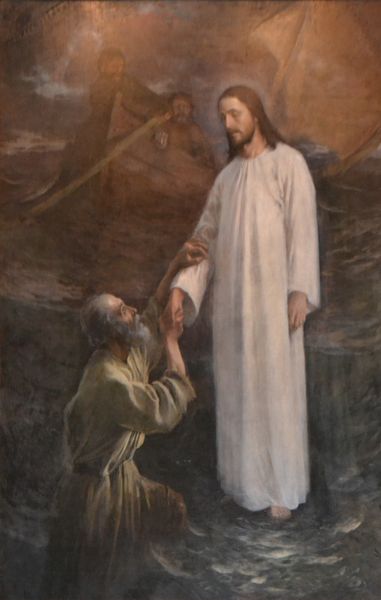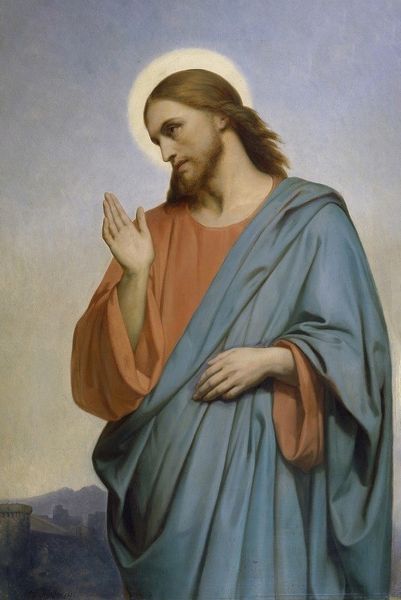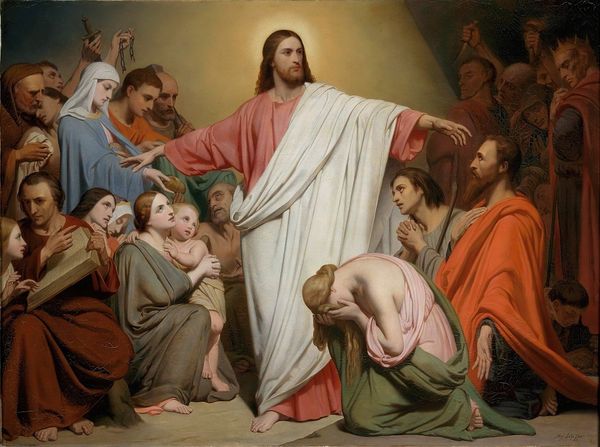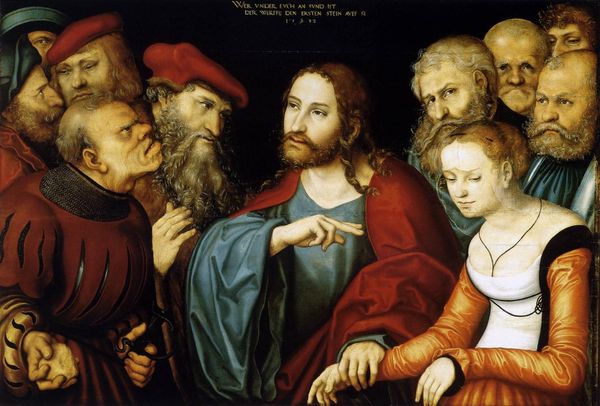
painting, oil-paint
#
narrative-art
#
painting
#
oil-paint
#
group-portraits
#
history-painting
#
academic-art
Copyright: Public domain
Editor: This is Eugène Burnand's "Das Hohepriesterliche Gebet," painted in 1900 using oil paints. It strikes me as a very solemn and contemplative scene, with a powerful central figure. What do you see in this piece, looking at it from your perspective? Curator: What I find compelling is how Burnand positions this biblical scene within a specific cultural and artistic context. At the turn of the century, academic art was still prominent, and we see its influence here in the carefully rendered figures and the controlled composition. But the artist's decision to depict Christ and his disciples with such human, relatable emotions seems to signal a shift, perhaps reflecting broader societal questions about faith and representation in a rapidly modernizing world. Editor: So, it’s like Burnand is using the traditional language of academic art to convey something more… humanistic? Almost challenging the rigid structures? Curator: Precisely! Think about the socio-political forces at play. Europe was grappling with secularization and questioning established norms. By portraying religious figures with such visible emotion – see the downcast eyes, the clasped hands – Burnand opens up a space for individual interpretation, a move away from purely dogmatic portrayals. How might the reception of such an image differ across various social classes and religious affiliations at the time? Editor: That’s a great question, actually. I never considered how radically different groups might see the same piece so differently depending on background. This feels like a glimpse of how art was starting to navigate cultural change. Curator: Indeed. It reveals how even within established artistic frameworks, artists could subtly challenge, or at least question, the status quo through the politics of imagery and emotional display. Editor: I learned so much about this piece's placement within larger society. Curator: It's a compelling work that exemplifies the nuances within art history.
Comments
No comments
Be the first to comment and join the conversation on the ultimate creative platform.
